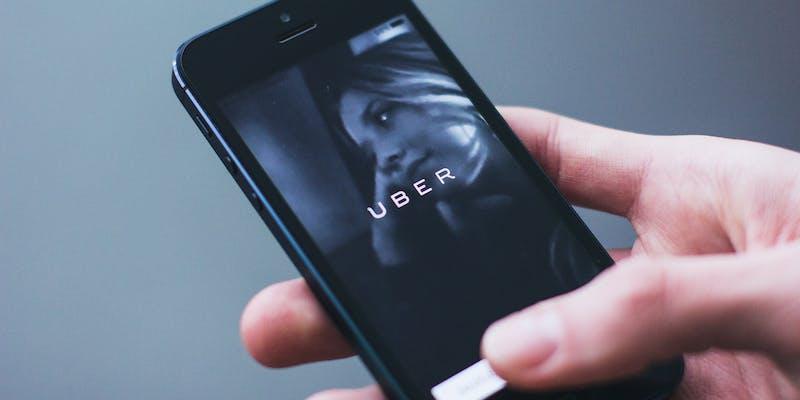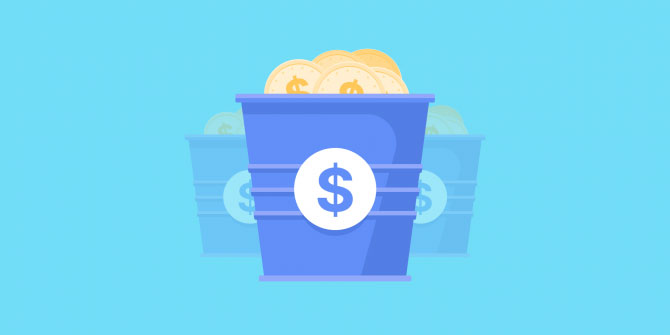Earnings Face-Off: Uber vs. Lyft for Drivers
Dec 03, 2023 By Triston Martin
Many people are starting profitable side businesses in ridesharing in the gig economy. However, working for Uber vs Lyft, two major providers, has become a debate among drivers. Assessing which platform gives the best working experience is crucial in 2023 because of the increasing inflation. Let’s understand which of the two offers more benefits.
Uber vs. Lyft
Ridesharing entrepreneurs must maximize revenues in this economy. Many wishing to benefit from this growing opportunity must decide whether to work for Uber or Lyft. Chauffeuring has become widespread employment as the gig economy attracts workers looking for extra cash. The difficulty is deciding between Uber and Lyft, two business titans. Aspiring drivers must decide which company is best for them because both offer rich opportunities. This article compares Uber and Lyft to help you choose based on your needs.
Evolutionary History
2009 Travis Kalanick and Garrett Camp founded Uber Technologies, a ridesharing pioneer. Uber, the first ridesharing app for iOS and Android, targeted business executives with premium automobiles. The organization expanded to serve a broad rider base. Uber's approach to consumer happiness is shown by their frequent price cuts, wide selection of transportation options, and rewarding points system for Uber and Uber Eats. This improves passenger satisfaction and boosts driver earnings.
Lyft, started in 2012 by Logan Green and John Zimmer, swiftly became a transportation network powerhouse. With headquarters in San Francisco, California, Lyft provides peer-to-peer ridesharing, taxi, and bike-sharing services in the US and Canada. Lyft, the second-largest ride-hailing service, acquired Postmates to deliver food and products. The Lyft app for iOS and Android lets users request trips, pick ride options, and follow their driver's position.
Uber and Lyft's ridesharing titans square off in the last struggle for market control. Uber has a more extended history and worldwide footprint, while Lyft has differentiated itself via savvy acquisitions and diversified service offerings. Rider incentives, frequent pricing modifications, and a points-based rewards system set Uber distinct, giving riders several alternatives. Lyft Pink's entry into regular riders' territory shows a dedication to client loyalty and affordability. Lyft's adaptability in the ridesharing market has increased with Postmates' purchase.
Driver Qualifications

To provide a safe and dependable ridesharing experience, Uber and Lyft have set driver criteria. Professional driver skill is not required; attaining the following standards ensures passenger safety and satisfaction.
Uber Driver Requirements
Uber has different driver standards in the US, including:
- Reach your city's driving age.
- Minimum three years of driving experience for under-25s.
- One year of driving experience.
- Have a US driver's license.
- Use a 4-door qualifying car.
- Show proof of city, state, or provincial residency.
- Show proof of driving car insurance.
Lyft Driver Requirements
Lyft has the following driver requirements:
- Meet local driving age requirements.
- Have a driver's license.
- Show proof of city residency.
- Use a qualified 4-door car, but regional specs may vary.
- Clear a background check.
- Show car insurance.
Uber and Lyft prioritize age eligibility, driving qualifications, car fit, residence verification, and insurance documents. Drivers applying for ridesharing platforms must meet these requirements.
Driver Pay/Tips
Rideshare driving may be profitable, but knowing driver compensation and tips is essential to maximize profits. Uber and Lyft, the biggest ridesharing companies, offer drivers many ways to make money, depending on multiple criteria.
Uber Driver Pay & Tips
Uber driver income varies by ride duration, time of day, and location. Pay breakdown for Uber:
- Per Ride: Ride base pay varies per city.
- Per Minute: Bonus for driving in high-demand regions and keeping moving.
- Per Mile: Distance-based earnings.
- Tips: Drivers keep all passenger tips.
- Bonuses: Time, location, ride completion incentives, and surge pricing.
Lyft Driver Pay & Tips
Lyft is similar to Uber's multiple-driver remuneration strategy based on the following:
- Time: Ride time compensation depends on local per-minute rates.
- Distance: Payment per mile, based on regional rates.
- Tips: Drivers keep 100% of user tips.
- Bonuses: Rush hour and unique event benefits.
Understanding Uber and Lyft driver compensation and tips helps rideshare drivers plan, capitalize on peak hours, and optimize profits. Due to ride-specific characteristics, both platforms offer drivers flexible and lucrative revenue.
Rideshare Earnings Comparison
Which platform compensates its drivers more is a complex subject at the heart of the ongoing Uber vs. Lyft dispute. Both Uber and Lyft utilize complex pricing models that consider elements including the length of a route, location, and any incentives the driver earns. In addition to the standard fare for each journey, Uber driver can make more through minute and mile increments, tips, and peak-time incentives.
Like this model, Lyft price calculator pays drivers based on trip duration. Distance traveled and gratuities, with peak hours rewarding hard work. According to Gridwise, in 2022, Uber compensated drivers considerably more than Lyft hourly. Gross hourly wages for Uber drivers in 2022 were $21.14, compared to $19.90 for Lyft drivers. Compared to Lyft, Uber provides its top-tier drivers with more attractive benefits.
Ridesharing Options

Uber and Lyft drivers must decide whether to accept or decline ride requests. Both systems provide easy-to-use tools to help drivers handle ride requests.
Uber
Drivers may accept Uber trips by opening the app and tapping "Go." App modes are "Open" and "Accepting." Drivers receive notifications for rides near their location in "Accepting" mode and are ready for any ride in "Open" mode. Uber discloses trip data, including destination and pricing, to improve transparency. This lets uber driver plan trips with confidence. Drivers can swipe to accept the task if it fits their preferences or reject it to let adjacent drivers take it. Uber also allows drivers to establish filters to accept route requests based on ride type, destination, and time.
Lyft
Lyft drivers may accept rides by tapping "Go Online" to appear for local rides. Lyft offers the passenger's name, anticipated pickup time, and destination when requesting a trip. Drivers can estimate fares before accepting or rejecting rides. If the ride suits them, hitting "Accept" starts, and drivers are on their way. Like Uber, Lyft lets drivers filter by route type, destination, or time frame.

What is Bankruptcy, and How Does It Work? A Comprehensive Guide

Equity Financing vs. Debt Financing

Pro-forma Earnings

All About Innocent Spouse Relief

Do You Know: What Is a Qualifying Life Event?

What Is A Mortgage? Classes, Operation, and Typical Applications

Nelnet Student Loan Servicing

Which Mortgage Type Should I Choose?

Roth and Traditional IRA Contribution Limits

